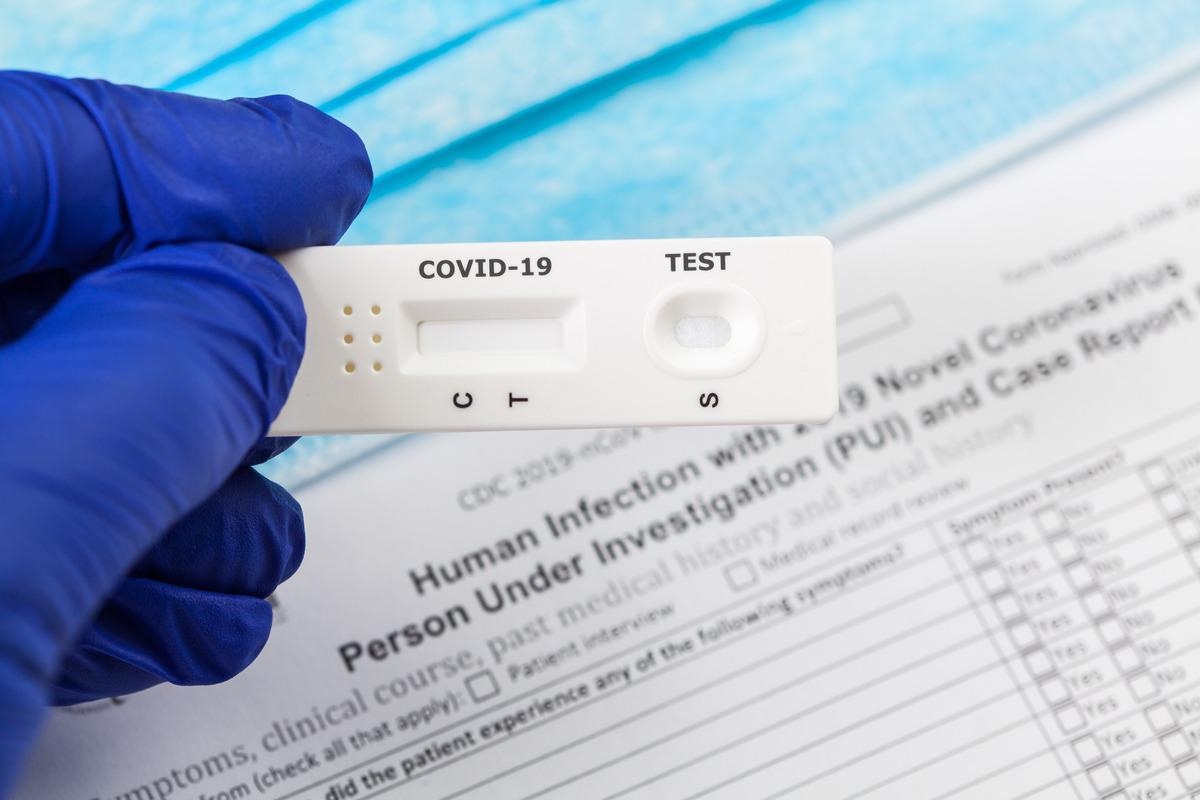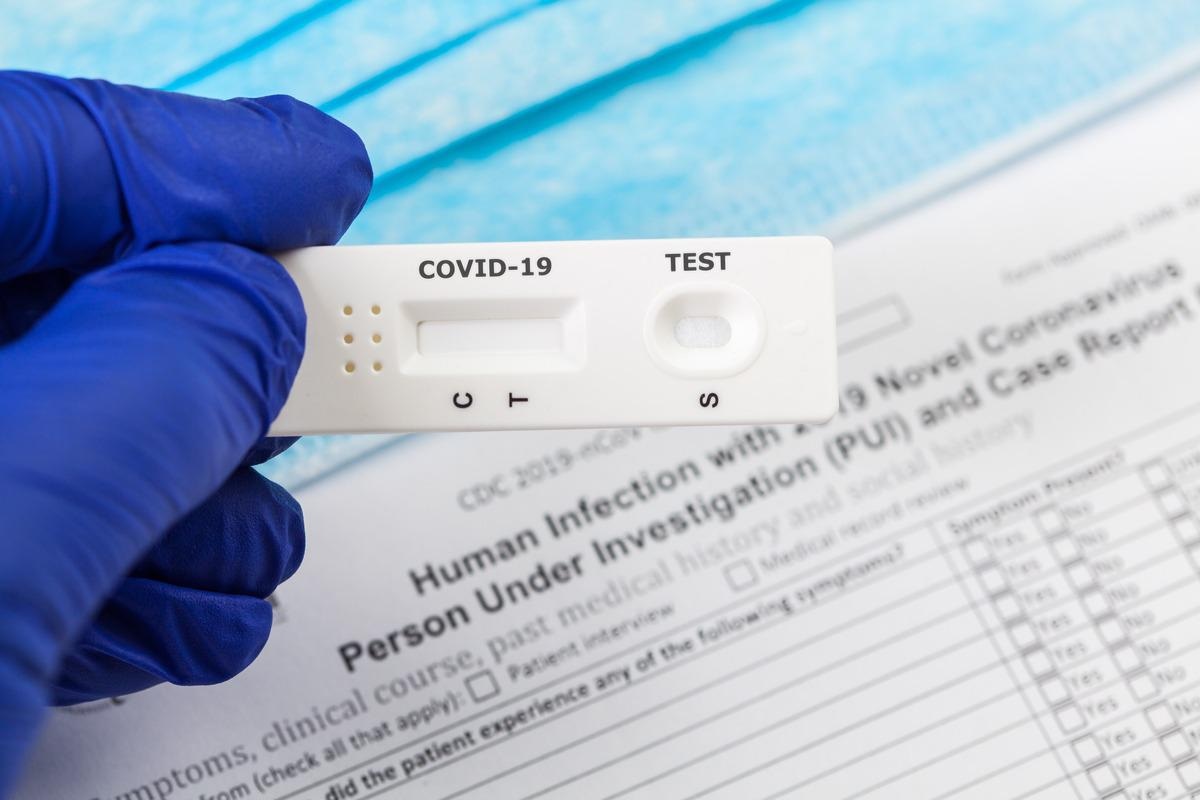Saliva-based serology assays that measure antibodies against severe acute respiratory syndrome coronavirus-2 (SARS-CoV-2) antigens are important coronavirus disease 2019 (COVID-19) markers. Serology can be employed to detect the incidence and frequency of the disease and evaluate public health strategies implemented to prevent its spread. Serology can also aid in delineating the efficacy of vaccines. Serosurveillance can also uncover the mortality rate, morbidity, and long-term sequelae of COVID-19.
 Study: Saliva-based SARS-CoV-2 serology using at-home collection kits returned via mail. Image Credit: Cryptographer/Shutterstock
Study: Saliva-based SARS-CoV-2 serology using at-home collection kits returned via mail. Image Credit: Cryptographer/Shutterstock
Serology has also been used to establish approaches to vaccine prioritization and dosing and determine the durability of antibody production. Hence, the longevity of immunity post-vaccination or infection. These assays may become essential once a specific correlation of the antibody levels to protection from infection is ascertained—for identifying individuals who require booster doses of COVID-19 vaccines.
A broader application of serosurveillance imposes certain logistical challenges –collection, processing, and transportation of serum. At-home collection kits may help in overcoming some of these hurdles. A high proportion of salivary IgG is derived from blood. Saliva samples are easy to self-collect; saliva can serve as a specimen for SARS-CoV-2 serosurveillance as it reflects the antibody response in serum during the acute phase of infection and during and after recovery. However, such serology tests are not commercially available.
The study
A recent study available on Research Square* evaluated the sensitivity and specificity of a “spit and mail” serology test. The present study utilized prospective samples and pre-established thresholds and tested samples provided within weeks following nasal polymerase chain reaction (PCR) testing for SARS-CoV-2.
Here, a diverse group of participants was asked to return specimens complying with shipping regulations without supervision through written instructions. Salivary anti-CoV-2 antibodies were measured, and the sensitivity and specificity were estimated at various time points. Samples that could have been affected in transit or due to any technical issue were flagged.
Results
Overall, samples were received from 121 individuals; 33% of these participants tested positive for SARS-CoV-2 infection by real-time PCR (RTPCR), and 67% of participants tested negative. All participants were demographically matched.
Results of PCR testing revealed that older asymptomatic patients undergoing pre-surgical clearance had a lower positivity rate than those who had symptoms of COVID-19.
Meanwhile, the SARS-CoV-2 Spike immunoglobulin (Ig)G assay showed the best overall accuracy, with a sensitivity of 40.7% – at two weeks of PCR testing, which peaked at 96% at two-four weeks and then again slightly declined to 92.6% at four-eight weeks. The specificity was estimated at 92.4%. When conducted with serum samples, the same assay rendered sensitivity and specificity of 90.8% and 97.4%, respectively.
The SARS-CoV-2 N IgG assay showed sensitivity and specificity that were not statistically different. In addition, SARS-CoV-2 receptor-binding domain (RBD) IgG assay exhibited equivalent sensitivity, but the specificity was comparatively low.
Moreover, IgG reactivity to the SARS-CoV-2 spike protein strongly correlated to IgG reactivity to the N protein and RBD domain of spike protein, particularly for PCR-positive patients. The results indicated that anti-RBD IgG antibody concentrations were almost three-fold lower than the full-length spike. This discrepancy was speculated to occur due to the lesser antigenic epitopes in RBD relative to spike.
For PCR-negative individuals, IgG reactivity to SARS-CoV-2 N had a greater span than IgG reactivity to SARS-CoV-2 Spike. This could have probably occurred due to the interaction of host antibodies from past infections with other coronaviruses. Nonetheless, the effect of any such interaction on assay performance was minimal—with the N assay showing a notable decline in specificity compared to the Spike assay.
For the 67 PCR-negative participants who sent at least two samples each, six had a minimum of one positive sample on SARS-CoV-2 Spike IgG assay. Among these, two were found to have salivary IgG levels above the SARS-CoV-2 Spike threshold for all their samples. In addition, these participants had salivary IgG levels above the SARS-CoV-2 N protein threshold—suggesting an undiagnosed infection before enrolment.
Two participants who initially had a negative sample exhibited delayed seroconversion after 30 days (according to SARS-CoV-2 N IgG assay). These subjects could have been infected during or after enrolment and thus, had a false negative PCR test.
For all three antigens tested, the area under the curve (AUC) was significantly more for samples collected later than two weeks after PCR testing than for samples collected within two weeks. Thus, the former elicited higher sensitivity; the assay achieved an optimal diagnostic milestone by the two-week time point. However, the SARS-CoV-2 RBD assay failed to classify the same samples accurately. On the other hand, the pre-determined RBD IgG assay threshold was lower than optimal. Increasing the threshold improved the specificity for samples collected four weeks or later after PCR testing while conferring a minimal decline in sensitivity.
However, despite the simplicity of the saliva collection process, the probability of poor specimen quality on self-collection must be accounted for. Of the eight flagged samples, six were found to be true negatives. Hence, excluding these samples did not significantly impact the reported sensitivity or specificity. Low observed levels for the endemic coronaviruses were generally associated with low levels of total immunoglobulin.
The present study reinstated the findings of previous studies that found general acceptance for self-collected specimens by confirming the feasibility of a “spit and mail” approach using a highly scalable kit for large-scale serologic testing. Diverse groups of populations can handle this easy-to-use kit. The assays require minimal sample handling and can be performed rapidly using an automated analyzer. The method can be useful for epidemiologic studies that require identifying people who have previously been infected or vaccinated. Furthermore, saliva tests can also help easily detect the durability of immunity against COVID-19.
*Important notice
This study is a preliminary scientific report that has not yet been peer-reviewed and, therefore, should not be regarded as conclusive, guide clinical practice/health-related behavior, or treated as established information.
-
Campbell, C. et al. (2022) "Saliva-based SARS-CoV-2 serology using at-home collection kits returned via mail". Research Square. doi: 10.21203/rs.3.rs-1273540/v1. https://www.researchsquare.com/article/rs-1273540/v1
Posted in: Medical Science News | Medical Research News | Disease/Infection News
Tags: Antibodies, Antibody, Assay, Blood, Coronavirus, Coronavirus Disease COVID-19, covid-19, Diagnostic, Efficacy, Frequency, immunity, Immunoglobulin, Mortality, Polymerase, Polymerase Chain Reaction, Protein, Public Health, Receptor, Research, Respiratory, SARS, SARS-CoV-2, Serology, Severe Acute Respiratory, Severe Acute Respiratory Syndrome, Spike Protein, Syndrome, Vaccine

Written by
Nidhi Saha
I am a medical content writer and editor. My interests lie in public health awareness and medical communication. I have worked as a clinical dentist and as a consultant research writer in an Indian medical publishing house. It is my constant endeavor is to update knowledge on newer treatment modalities relating to various medical fields. I have also aided in proofreading and publication of manuscripts in accredited medical journals. I like to sketch, read and listen to music in my leisure time.
Source: Read Full Article
